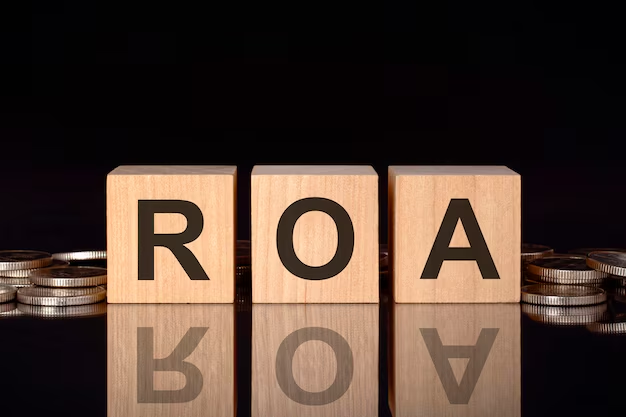Are Dividends in a Roth IRA Tax-Free? Understanding the Benefits
Nestled within the vast financial landscape, Roth IRAs have earned a spot as one of the most appealing retirement savings vehicles. They offer a fascinating feature: tax-free growth. But what about dividends? Are dividends earned in a Roth IRA taxable? Let's dive into this topic with a comprehensive exploration of how a Roth IRA functions, its benefits, and how it handles dividends.
📈 Understanding the Roth IRA
What Is a Roth IRA?
A Roth IRA is a type of individual retirement account that allows contributions with after-tax dollars. Unlike traditional IRAs, where you might get a tax deduction on contributions but pay taxes on withdrawals, Roth IRAs allow tax-free withdrawals in retirement. This feature makes them particularly advantageous if you expect to be in a higher tax bracket upon retirement.
Key Features of a Roth IRA
- Contributions Made with After-Tax Dollars: You pay taxes on your income now, but withdrawals are tax-free later.
- Tax-Free Withdrawals: If you adhere to certain conditions, you can withdraw both contributions and earnings tax-free in retirement.
- Flexible Contributions: You can contribute to your Roth IRA as long as you have earned income, regardless of age.
💰 Dividends and Roth IRAs: How Do They Work?
What Are Dividends?
Dividends are payments made by a corporation to its shareholders from its profits. They can be paid in cash, additional shares, or other forms, serving as a source of regular income for investors.
Are Roth IRA Dividends Taxable?
The short answer is no. Dividends earned within a Roth IRA are not taxable. Here’s why:
Tax-Deferred Growth: All earnings, including dividends, grow tax-deferred in a Roth IRA. This means you don't owe taxes on dividends, interest, or capital gains while the funds remain in the account.
Tax-Free Withdrawals: If you're 59½ or older and have held the account for at least five years, you can withdraw the funds, including accumulated dividends, tax-free.
Important Exceptions
- Early Withdrawal Penalties: If you withdraw earnings before the age of 59½ and without meeting the five-year holding period, you might incur taxes and a 10% penalty.
📝 Maximizing Roth IRA Benefits
Contribution Limits and Strategies
Current Contribution Limits
- Under Age 50: Up to $6,500 per year
- Age 50 and Over: Additional $1,000 catch-up contribution
Tip: Maximize Early Contributions
Contributing the maximum amount early in the year enables your money to benefit from compound growth over a more extended period.
Asset Allocation & Dividend Reinvestment
- Reinvest Dividends: Taking advantage of reinvesting dividends can lead to significant growth over time.
- Diversify for Stability: Incorporate a mix of dividend-paying stocks, bonds, and other investments to balance growth and risk.
Tax Planning
- Use Roth's Tax-Free Withdrawals Strategically: Consider delaying withdrawals to maximize tax-free growth, or use Roth IRA funds for large, tax-inefficient purchases in retirement.
📊 Case Scenarios: Roth IRA Dividend Growth Potential
The Power of Compound Growth
Consider an example where an investor reinvests dividends within a Roth IRA:
- Initial Investment: $50,000
- Annual Contribution: $6,500
- Average Dividend Yield: 2%
- Annual Return Rate: 6%
Over 30 years, even with conservative growth estimates, the account could grow significantly due to compound growth, all tax-free.
Practical Takeaway
Reinvesting dividends and allowing them to grow tax-free is one of the most powerful aspects of a Roth IRA. Taking a long-term view and using Roth IRAs for dividend income can potentially build a robust retirement nest egg.
🚫 Considerations and Potential Pitfalls
Early Withdrawals
- Taxes and Penalties: Withdrawals of earnings before age 59½ could result in taxes and a penalty unless exceptions apply.
- Five-Year Rule: Meeting the five-year rule is crucial to withdrawing earnings tax-free.
Roth IRA Conversion and Its Impact
- Understanding Conversion: Converting a traditional IRA to a Roth may involve paying taxes on pre-tax contributions but results in future tax-free withdrawals.
- Strategic Timing: Consider converting during years of lower income to minimize immediate tax impact.
🗒️ Summary of Key Points
Here's a quick glance at the main ideas covered:
Dividends in Roth IRAs:
- Not taxable as long as funds remain within the Roth IRA.
- Can be withdrawn tax-free under qualifying conditions.
Maximizing Benefits:
- Maximize contributions each year.
- Reinvest dividends for compound growth.
- Withdraw earnings tax-free after 59½ and meeting the five-year rule.
Planning Tips:
- Consider the impact of early withdrawals.
- Strategically approach Roth conversions during lower-income years.
🎉 Understanding the Broader Picture
A Roth IRA, with its tax-free dividends and flexible distribution rules, stands as a powerful tool in the realm of retirement planning. Whether you're focused on leveraging its potential for tax-free growth or strategizing withdrawals to maximize savings, understanding how dividends interact within a Roth IRA is fundamental. Aligning your strategies with personal financial goals will help optimize the benefits of this versatile account, paving the way for a financially secure retirement.
